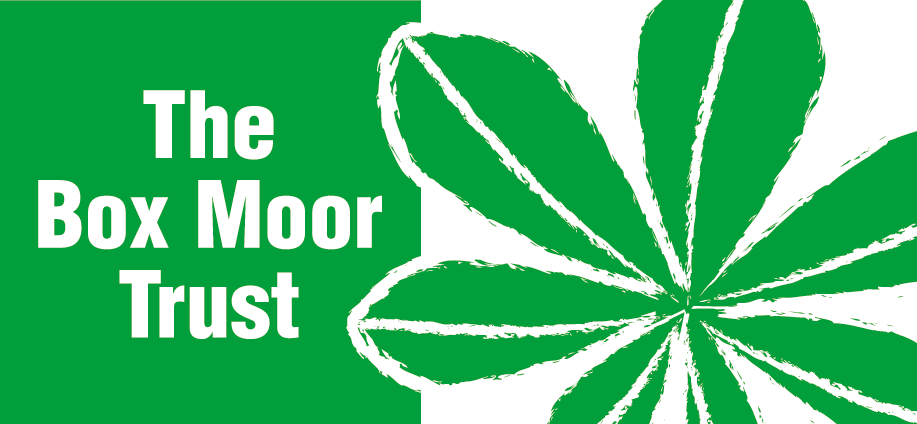Our Animals
The Box Moor Trust has not always kept its own stock, in fact in our 428+ year history it is only within the last 50 years that the Trust’s own animals have been seen on the moors. In the 1970s to combat falling numbers of graziers’ animals on the moor, the Trust introduced Belted Galloway cattle.
These cattle are a hardy, slow maturing breed from the Scottish Borders that suit the poor grazing available on the estate. Their striking white belt set against their black body has made them a firm favourite with locals and travellers along the A41.
In 1993 the Trust introduced a small flock of Norfolk Horn sheep, with the aim to assist in the conservation grazing programme. The flock has grown to over 100 sheep, and now include another traditional breed, the Ryeland. Together they are a major contributor in the management of the important grasslands that make up large areas of the Trust’s land.
The horses and ponies on the Moors do not belong to the Trust. Instead, they belong to a local grazier, whose family has been grazing the land for decades.


Why Graze?
Grazing animals help us to manage particular sites in the most effective and natural way possible.
Hundreds of years ago, people cleared the land of trees to form open spaces for farming. Their grazing animals helped to shape many of our semi-natural habitats, which developed rich and diverse wildlife communities. Our grassland, meadows and moorland habitats were all shaped by human activity and grazing is often the most effective and sustainable way to maintain them and their huge variety of plants and animals.
Stocking densities for conservation grazing are usually low and the timing and duration of grazing is carefully managed. Both over- and under-grazing will reduce the wildlife value of a habitat, so we aim to graze a site in a manner required to maintain or restore the habitats found there.
Livestock grazing has a less instantaneous impact than burning or cutting, so allows less-mobile wildlife to thrive. The grazing animals can also access areas that machinery can’t.
Our livestock
The choice of livestock used for conservation grazing is very important. Differences in feeding preferences, physiology and behaviour mean that different animals and breeds are needed to manage different habitats.
- Cattle use their tongues to wrap around and pull up tufts of vegetation, leaving uneven sward lengths and producing a tussocky field. They will eat longer, coarser grasses and push their way through scrub and bracken to create open spaces.
- Sheep prefer to nibble shorter grasses but will also select flower heads, which can result in a decrease in species diversity if not properly managed. Many traditional and hill breeds have a strong browsing requirement to their diet, so are good for scrub control. Their small size means they can access areas that machinery can’t.
- Ponies preferentially graze grasses and generally avoid eating flowering plants, allowing them to thrive and multiply. They will happily take plants that other animals would avoid – for example, New Forest ponies will eat large quantities of bracken in late summer, when it is less toxic.
- Heavier animals break up the ground and create bare areas for seeds to germinate. Hooves also haphazardly push seeds into the ground.
- Smaller breeds can access more difficult terrain, such as wet ground, where other breeds would cause damage or even get stuck.


The Box Moor Trust's Five Freedoms of Managing Animals
The keeping of livestock can be a difficult but also rewarding task; the Box Moor Trust adheres to the “Five Freedoms” when managing their animals.
Freedom from hunger and thirst
Freedom from discomfort
Freedom from pain, injury or disease
Freedom to express normal behaviour
Freedom from fear and distress
In taking account of these freedoms, those people who care for livestock should demonstrate:
- caring and responsible planning and management
- skilled, knowledgeable and conscientious stockmanship
- appropriate environmental design (for example, of the husbandry system)
- considerate handling and transport of animals
- humane slaughter
Livestock
We want you to enjoy this special place; please take note of the following:-
Do:
- Try not to get between the livestock and their young
- Move quickly and quietly, and if possible walk around the livestock
- Be prepared for the livestock to react to your presence, especially if you have a dog with you
- Keep your dog close and under effective control, on a lead no longer than 2 metres
- Clean up after you dog and use the bins provided
Do Not:
- Don’t hang onto your dog. If you feel threatened by livestock, it is better to let your dog go
- Don’t panic or run, livestock will generally stop before they reach you; if they follow, just walk on quietly
- Do not feed the livestock
- Do not attempt to touch the livestock
